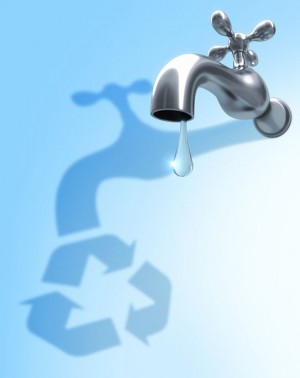
Considering that water heating can account for around 25% of a family’s utility bill—the biggest chunk after space heating and cooling—it really shouldn’t be that surprising that you want to know how to heat your water more efficiently. Obviously, not everyone is in a position to go out and buy a new water heater, but we can all do something to use less water and save on our bills. Whether you’re looking for no-cost habit changes, low-cost purchases or improvements, or large investments like new water heaters or appliances, there’s something here for you:
- Take short showers instead of baths. Of course, your savings here depends on your and your family’s habits. A long, hot shower may use a lot more hot water than a bath where the tub isn’t filled to the brim. But even a bath with only a few inches of water can use a heck of a lot of water if you have one of those HUGE jetted bathtubs! A warm bath is a nice luxury, but for daily bathing stick with a short shower. And if you can stand it, you might even try turning off the water while soaping up, shampooing, or shaving!
- Reduce your time in the shower. I know I sometimes spend too long in the shower because I’m just too cold to get out! This is anecdotal, but keeping the bathroom door tightly closed seems to keep the air much warmer; just run the fan to take care of the steam. Having a big towel and big fluffy robe nearby also helps!.
- Don’t let the water run. Are you guilty of leaving the water on while you brush your teeth? Or when you step away to grab dirty dishes, or find the soap? All of those extra minutes can add up to a lot of wasted water. It only takes a second to shut it off!
- Use cold water for most laundry loads, and always use cold water for the rinse cycle.
- Use your dishwasher efficiently. Wash only full loads, choose shorter wash cycles, and activate the booster heater if your dishwasher has one.
- Fix leaks. A leak of one drip per second can cost $1 per month. That may not seem like much, but this drip calculator from the American Water Works Association puts it into perspective: at 60 drips per minute, you waste 8.64 gallons per day, 259 gallons per month, and just over 3,153 gallons per year. That is a LOT of good, clean water just going to waste!
- Install low-flow fixtures. Federal regulations require new showerheads and faucets to have low flow rates. Showerheads and faucets that pre-date 1992 can use more than twice as much water as new ones. For a small investment, you can achieve water savings of 25%–60%. Learn more about low-flow showerheads and faucets.
- Install heat traps on your water heater tank. You may need a professional to help you install them on your existing tank, but some new storage water heaters include heat traps.
- Insulate your hot-water storage tank. For electric tanks, be careful not to cover the thermostat, and for natural gas or oil hot water storage tanks, be careful not to cover the water heater’s top, bottom, thermostat, or burner compartment. (Follow the manufacturer’s recommendations).
- Insulate the first few feet of the hot and cold water pipes connected to the water heater. Learn more about insulating your water pipes.
- Install a timer that turns off your electric water heater at night or times when you don’t use it. You could also use it to turn off the water heater during your utility’s peak demand times.
- You can use a Gas Water Heater Timer to lower your energy cost and extend the life of your gas water heater
- Consider upgrading your clothes washer. ENERGY STAR® says that you could fill three backyard swimming pools with the water you save over the life of a new ENERGY STAR-qualified washer. If you’re replacing a washer that’s over 10 years old, you can save over $135 per year.
- Consider purchasing a new water heater. Don’t limit yourself to just conventional storage water heaters! There are other efficient options that might be right for you.
- Consider purchasing an ENERGY STAR-qualified dishwasher that uses 31% less energy and 33% less water.
